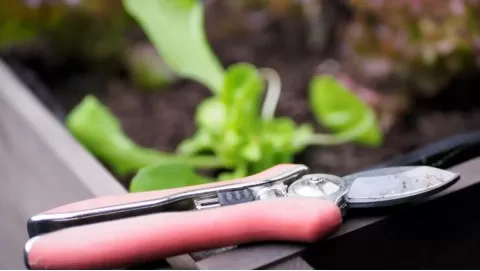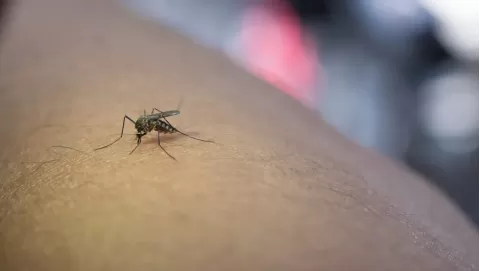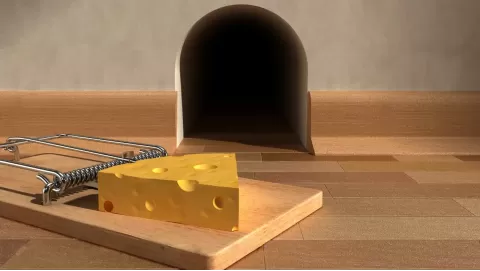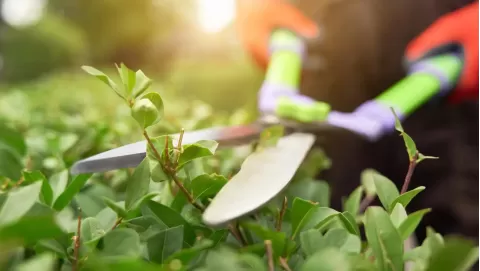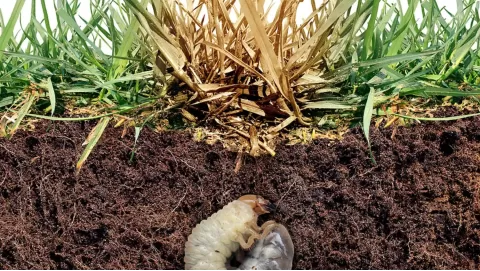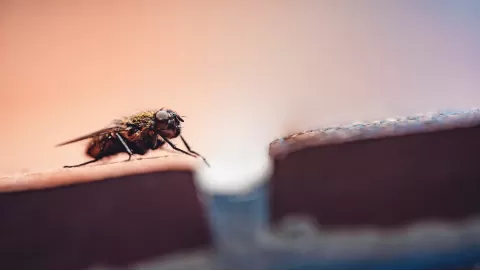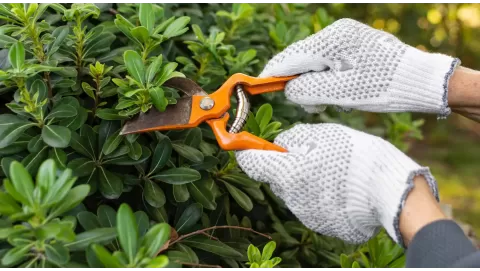
Top non-toxic weed killers for a safer, greener garden
Billions of people are seeking chemical-free alternatives to eliminate weeds safely. Most general weed killers contain potent ingredients such as glyphosate, which can pose health risks for pets, children, and useful insects. They can also impoverish the soil and harm the environment.
Non-toxic weed killers are a safer choice. They have a natural active ingredient like vinegar, salt, soap or plant oils. These products are safer for kids, pets and the environment. They are still capable of killing weeds, but they are less destructive than chemical sprays.
Criteria for Selecting Eco-Friendly Weed Killers
Knowing which is the best organic weed killer to buy can be difficult because there are so many choices. For a smart and safe choice, gardeners should examine the ingredients, consider safety labels and measure how well the product works.
Active Ingredients
When selecting a safe, non-toxic weed killer, make sure to read the ingredients. Some of the most popular natural ingredients are:
- Vinegar (acetic acid): This will scorch the leaves of the weeds and is most effective on the younger, smaller plants.
- Fatty-acid soaps: Derived from natural oils, these soaps desiccate and kill weeds rapidly.
- Citrus extracts: Lemon or orange-based extracts can attack the weed’s outer surface.
- Plant oils: Some oils, such as clove oil or peppermint oil, can harm weed leaves and inhibit their growth.
The ingredients are safer on humans, pets and the environment, but they still work to control weeds.
Certifications and Labels
Green products frequently boast special labels to convey that they are safe and natural. Here are a few to look for:
- OMRI Listed (Organic Materials Review Institute): Ensures the product is allowed for use in organic gardening.
- Biodegradable: These products decompose naturally, but do not just remain in the soil or waters.
- Glyphosate-Free: This means the product does not contain the dangerous chemicals that can be found in most powerful weed killers.
- Pet Safe Weed Killer for Lawns: When the product is used accordingly, the pet or child is safe.
These labels assist gardeners in selecting products that are safe and dependable.
Performance Metrics
All top organic weed killers are not made equal. A few things to look for:
- Speed of action: Some products act in hours, but may require a day or more to kill all the pests.
- Selectivity: Some weed killers are all-purpose plant killers; others are made specifically to kill only weeds. It’s useful when planning to treat near grasses or flowers.
- Residual effects: A lot of eco-friendly products don’t stick around in the dirt for long which is a good thing in terms of safety. But that also means that weeds can return more quickly.
Top Commercial Non-Toxic Weed Killers
Many people wish to kill weeds without the use of nasty chemicals. The good news is that there are plenty of non-toxic weed killer options to choose from that aren’t only safe but also environmentally friendly. These products are made of natural substances including vinegar, plant oil and soap, that kill weeds without damaging the environment. Here are 5 of the best non-toxic weed killers that provide effective results without the risk to families, pets, and wildlife.
1. Doctor Kirchner Natural Weed & Grass Killer
Doctor Kirchner is simple and effective. It doesn’t need to be mixed; it's just sprayed right on the weeds. The vinegar burns the leaves, the salt dries them out, and the soap makes the mixture stick to the plant. The results are frequently visible within hours for users. It is most effective on young, green weeds and is particularly well suited for hard surfaces or places with no grass. It’s biodegradable as well, and doesn’t leave toxic residues behind in the ground.
- Main Ingredients: Ocean water, food-grade vinegar, and biodegradable soap.
- Best For: Driveways, patios, fence lines, garden edges.
- Safety: Pet-safe and child-safe after drying.
- Packaging: Ready-to-use spray.
2. Green Gobbler 20% Vinegar Weed & Grass Spray
Green Gobbler works on contact and is four times more effective than vinegar, as weeds begin to wither and die within 4-24 hours. It is non-selective, so it will kill any plant it touches, so use it cautiously near flowers and lawns. The strong vinegar odour dissipates within a short time to decompose the product naturally. It’s for folks who need to work fast and like things that are approved-organic.
- Main Ingredients: 20% corn-based vinegar (acetic acid).
- Best For: Sidewalk cracks, gravel paths, driveways, and patios.
- Safety: OMRI-listed for organic use; pet-safe once dry.
- Packaging: Ready-to-use and available in bulk sizes.
3. Finalsan Organic Non-Selective Weed Killer
Finalsan works by destroying the leaves and drying out the weeds’s crop. It actually works best in cool or cloudy weather unlike some vinegar-based weed control products which require full sun. It’s rainfast in a matter of hours, and one can replant in the area a few days later. It is effective with a variety of weeds and also helps to remove moss and algae. That makes it particularly valuable for organic gardeners who want a safe spray that acts quickly and leaves no harmful residue.
- Main Ingredients: Fatty-acid soaps derived from natural oils.
- Best For: Garden beds, fence lines, around trees, and walkways.
- Safety: OMRI-listed; approved for organic gardening.
- Packaging: Available as ready-to-use or concentrate.
4. Avenger Organics Weed Killer Concentrate
Avenger is based on the oil in citrus peels and smells of oranges. It dissolves the waxy coating on weed leaves, desiccating them. The results are available in two hours. Since it comes in a concentrate, one can regulate the strength of the solution for the job. It’s ideal for big areas and provides just the right mix of safety and performance. It decomposes naturally in soil and does not interfere with future planting.
- Main Ingredients: D-limonene (from citrus oil).
- Best For: Landscaping beds, gardens, driveways, and around trees.
- Safety: OMRI-listed; non-toxic and safe around pets and children.
- Packaging: Concentrate needs mixing before use.
5. EcoSmart 24 oz RTU Weed & Grass Killer
EcoSmart is safe for families with children or pets. It is a blend of botanical oils and soaps, and it kills weeds in hours. It does not remain in the soil or water, so it’s safe for beneficial insects and soil life. It’s perfect for small gardens, backyards and high-traffic areas where safety is an issue. It has a nice scent and works quickly, endearing it to eco-minded gardeners.
- Main Ingredients: Plant-based oils (like my clove oil) and natural soaps.
- Best For: Lawns, flower beds, around playgrounds and pets.
- Safety: Labeled as non-toxic, child-safe, and pet safe weed killer for lawns.
- Packaging: Ready-to-use spray bottle.
DIY Non-Toxic Weed Killers
Some people opt for homemade remedies. There are some natural ways to keep weeds at bay with household items or regular tools. These solutions are budget friendly, simple to make, and non-toxic to the family and pets and the environment. Here are some of the most popular and effective DIY choices.
1. Simple Vinegar-Salt-Soap Recipe
This DIY, natural chemical free weed control is using stuff one probably already have in the kitchen and is great on driveways, sidewalks, artificial/ non-lawn areas.
Ingredients
- 1 gallon of white vinegar (5% acidity or higher).
- 1 cup of table salt.
- 1 tablespoon of liquid dish soap.
Method: Combine in a spray bottle and apply it to the leaves of the weeds on a sunny day. The vinegar causes the plant to dry out, the salt keeps it from regrowing, and the soap makes the solution adhere to the plant.
Note: This formula is non-selective and can harm any plant it contacts. It’s not the best for use in areas where people are trying to grow other plants.
2. Boiling Water and Steam Treatment
Boiling water is a straightforward and easy way to kill any types of weeds that are growing in cracks or seams in the pathway.
How to Use: Boil a pot of water and throw it directly over the weeds. This process kills the plant cells, which makes the weed wilt as well as droop down effectively.
Benefits
- Leaves no chemicals or residue behind.
- Safe to use around edible plants.
- Perfect for walkways, patios, and driveways.
Tip: Steam weeding machines are also available for larger areas and give the same effect without using herbicides.
3. Corn Gluten Meal as Pre-Emergent
Corn gluten meal is a natural side product from the corn milling procedure, and serves as a pre-emergent herbicide. It inhibits weed seeds from germinating but does not harm established plants.
How It Works: Scatter over garden beds or lawns to create a barrier that dessicates weed seeds before they take root. This approach is typically best completed early in spring or in the fall before weeds emerge.
Usage Tip: Spread an even layer, not too thick and not too thin, and gently water. Don’t plant any new seeds for several weeks after application, as one could suppress their growth too.
4. Solarization
This involves laying clear plastic sheeting over the soil to collect heat from the sun and “cook” the weeds and weed seeds in soil.
How to Do It
- Wet the soil.
- Cover the area with clear plastic.
- Leave it in place for 4–6 weeks during the hot summer months.
Result: Kills weeds, seeds, pests, and even some harmful fungi in the soil.
5. Newspaper or Mulch Barriers
Newspaper or mulch layers block light, preventing the growth of weeds below.
How to Use
- Cover the surface of the soil with 4- 6 sheets of newspaper or a deep layer of mulch.
- Water it down, just to anchor the dirt in place.
- Add a little bit more mulch on top if necessary to get even coverage.
Where to Use: Ideal for use in garden beds, flower borders, and along walking paths.
Application Best Practices
The best organic weed killer should be used in the right way to get the best out of it. It's also going to help prevent injury to other plants, people or pets. These recommendations include the ideal time to apply, how best to apply carefully, and how much to use.
Timing and Weather Conditions
The non-toxic weed killers will work best on warm, sunny, and dry days. Many natural products do their work by desiccating the plant, so sunlight can help speed that along.
- Do not spray before a rain, because rain can wash it all away.
- Apply during mid-morning to early afternoon for lots of sun.
- It is not for use on windy days to avoid drifting to adjacent plants.
Targeting Techniques
The way of applying the product can be a game changer. Spot treatments are almost certainly preferable to spraying widely, particularly if there are flowers, vegetables or grass nearby.
- Spray bottles or the handheld garden sprayers with a small, adjustable nozzle for better control.
- Use precision wands for small weeds in tight spaces.
- Cardboard shields or plastic guards protect nearby plants during spraying.
Dosage and Dilution Guidelines
It’s all about knowing just how much is the right amount. Too little won’t do the job, and too much could harm your soil or nearby plants even with natural products.
- For vinegar-based weed control: Mix 1 gallon of vinegar with 1 cup of salt and 1 tablespoon of dish soap.
- For concentrates: Follow label instructions—usually 6–12 ounces of product per gallon of water.
- On average, 1 gallon covers about 300–500 square feet.
Make sure to check the label on these and follow the instructions for use, contouring especially if using a concentrate.
Safety and Environmental Considerations
While those are chemical free weed controls these development must be used responsibly. Taking safety measures safeguards pets, kids, beneficial insects and the environment.
Protecting Beneficial Insects and Soil Health
Some sprays can inadvertently affect beneficial insects, like bees, or soil microbes if not applied with caution.
- Avoid spraying on flowers that attract pollinators.
- Keep grassy areas away from vegetable and flower gardens.
- Gently rinse any oversprayed plants with fresh water.
Pet and Child Safety
Natural weed remover options are safer, but it’s a good idea to keep pets and kids away from recently treated areas until the surface is dry.
- Most can be walked on as soon as they’ve dried (typically 1–3 hours).
- Look to the label for precise wait times.
- Wash paws or hands if exposed prior to drying.
Disposal and Storage
The natural doesn’t mean safe when it’s not stored or thrown away the right way. Storage is kept in the right order, so there is no leakage and no risk of accidents.
- Keep the product in a cool, dry location away from children and pets.
- Use all of the combined solution; do not discard any remnants down drains or in soil.
- Dispose of empty containers and rinse and recycle when feasible (or in compliance with local waste disposal regulations).
FAQs
What is the least environmentally damaging weed killer?
Glyphosate-free, biodegradable, OMRI-certified weed killers are the least harmful for the environment. These might include organic solutions like Green Gobbler 20% Vinegar Spray and Avenger Organics Weed Killer. They are fast-acting, not toxic and do not harm soil life and other plants if used cautiously.
What is the best weed killer that is not harmful?
The best non-toxic weed killers are potent, yet safe for humans, pets, and other animals. EcoSmart RTU Weed Killer is a favorite owing to its all-natural oils and soaps, fast action, safety around kids and pets once dry. It’s non-toxic to the soil and to water and biodegradable.
When is the best time to apply a natural weed killer?
Sunny, dry days are best. Natural weed remover works better with sunlight, particularly vinegar-based types. And make sure to don’t spray right before rain or in windy weather, to prevent the solution from washing away or drifting on nearby plants.
The Bottom Line
Non-toxic weed killers are better than toxic chemical herbicides. They work well at killing weeds naturally, safely for the family, for pets and the environment. Gardeners must adhere to best application practices to achieve desired results and avoid damaging nearby plants. For more natural weed remover products that are safe and effective for gardeners, check out Growcycle.
Disclaimer: This material is for informational purposes only and should not be relied on for legal, medical, financial, or any other form of professional advice.







